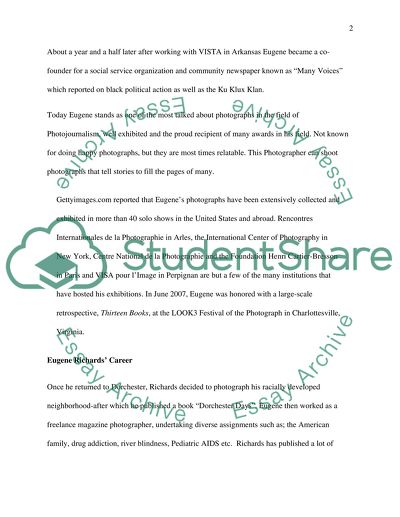Cite this document
(“History of Photography - Eugene Richards Term Paper”, n.d.)
Retrieved from https://studentshare.org/environmental-studies/1417517-history-of-photography-eugene-richards
Retrieved from https://studentshare.org/environmental-studies/1417517-history-of-photography-eugene-richards
(History of Photography - Eugene Richards Term Paper)
https://studentshare.org/environmental-studies/1417517-history-of-photography-eugene-richards.
https://studentshare.org/environmental-studies/1417517-history-of-photography-eugene-richards.
“History of Photography - Eugene Richards Term Paper”, n.d. https://studentshare.org/environmental-studies/1417517-history-of-photography-eugene-richards.


